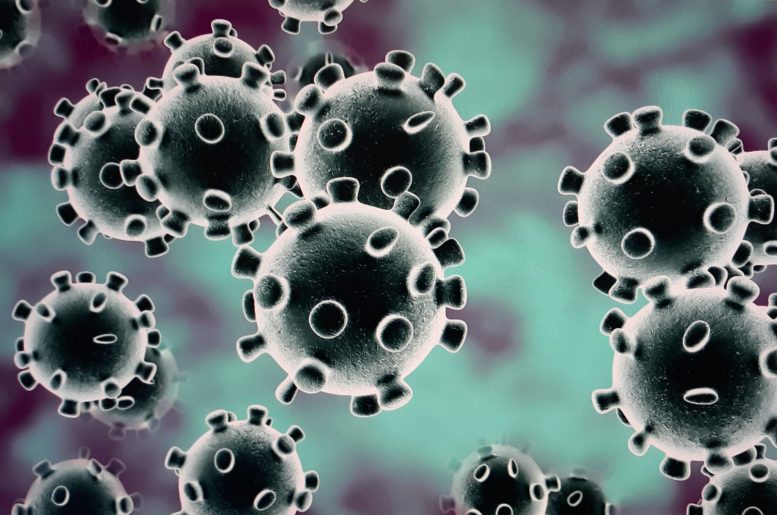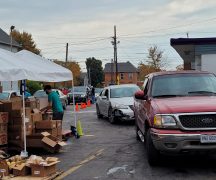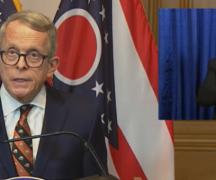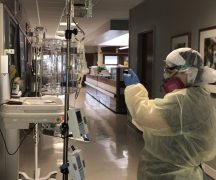While several candidates press on with large scale clinical trials, Ohio submitted a plan to the federal government outlining how it will distribute a COVID-19 vaccine among 11.7 million state residents.
The plan, dated Oct. 16, details who will get the vaccine first and how, given expected initial shortages.
Its 54 pages leapfrog from logistical nightmare to nightmare in dealing with a vaccine that may need to be stored at -472 degrees Fahrenheit; that could require two doses administered on separate days; and that prevents infection from a virus that disproportionately attacks people who are both physically and socioeconomically vulnerable.
The document is identified as an “interim draft,” though it was submitted to the CDC. The Ohio Department of Health provided it Monday upon request. Melanie Amato, a department spokeswoman, described it as a “framework of how decisions will be made” when more information about a successful vaccine candidate becomes available.
“We are setting up the process of how we move forward,” she said.
Eleven vaccine candidates are undergoing large scale clinical trials, according to a New York Times vaccine tracker. Scientists give the vaccine to thousands of people to see how they fare against a group that receives a placebo. The Food and Drug Administration, which regulates vaccines, told drug makers it wants evidence the vaccine is safe and can protect at least 50% of the people who receive it from infection.
Using guidance from the National Academies of Sciences, the vaccine, likely to be in short supply at first, will be prioritized by ODH as follows:
- Phase 1A: High risk workers and first responders
- Phase 1B: Older adults living in congregate or overcrowded settings (i.e. prisons or nursing homes) and people at “significantly higher risk” due to underlying health conditions
- Phase 2: “Critical risk workers essential to society” and at high risk of exposure; teachers and school staff; people of all ages with underlying conditions; all older adults not mentioned in Phase 1; people in homeless shelters; people in group homes; and people in jails and prisons. A footnote states that minority populations will be “integrated into planning” for this phase
- Phase 3: Young adults, children, and workers and occupations “important to the functioning of society and at increased risk of exposure.”
- Phase 4: Everybody else
Part of the strategy involves looping in various, relevant groups at each phase (i.e. the Ohio Hospital Association for Phase 1).
The exact method and locations of distribution points where consumers physically receive the vaccine is unclear. However, the state plains to recruit and train between 2,000 and 5,000 “pandemic vaccine providers,” possibly including pharmacies, nursing homes, community health centers, EMS and others.
The federal government, through a distributor, will likely ship some of the first doses to hospitals, who will administer the vaccines to prioritized groups. As more doses are available, shipments will go to a specialized ODH warehouse, which will repackage the doses into smaller shipments to local health departments and other providers while ensuring the doses remain appropriately chilled.
ODH will determine which providers get how many vaccines (especially during “early, limited-dose phases”) by what the providers can process, how many vulnerable populations the provider can access, and what the epidemiological outlook is in a given community.
If a vaccine does require a second dose, ODH is planning a direct-contact approach in which people will receive text messages and postcards reminding them to take their second dose, roughly 2.5 weeks after the first dose.
There will also be a more standard public outreach campaign to ensure Ohioans take the second dose, and ODH will also rely on providers to ensure people schedule their second dose upon receiving their first.
No vaccine has been developed for any coronavirus, and no vaccine of any kind has been developed in less than four years.
The swift pace of the current vaccine has left about 31% of Americans unsure if they’d get vaccinated, and about 20% saying they wouldn’t, according to an Associated Press-NORC Center for Public Affairs Research poll, cited in the planning document.
The document does not offer details as to who will pay for the distribution, storage, administration, and vaccine itself.
“The federal government is covering the cost of the development and distribution of the vaccine,” Amato said. “As for the rest of the cost, that remains to be seen.”
The department will publish certain metrics online about vaccine distribution. These may include the percentage of Ohioans vaccinated, breakdowns by priority groups, upcoming dose shipments expected, and others.
Vaccines serve two key public health purposes. For one, they protect the recipient from the disease in question; also, when and if a certain critical mass of a population takes a vaccine, they collectively produce a “herd immunity” effect where a disease runs out of viable hosts and dies off without anywhere to reproduce.
Herd immunity would give protection to people who are immunocompromised and cannot receive vaccinations.
The plan’s release coincides with a surge in new cases. Ohio’s seven-day moving average of new cases continued its upward climb Monday, well beyond its highest levels of a pandemic that has hospitalized nearly 17,200 Ohioans and killed 5,075 state residents.
***
Analysis: More unemployment supplements, direct payments to families, would provide best economic boost
As coronavirus continues to choke the economy, among the most effective economic stimulus tactics are another round of direct payments to families and more federal unemployment supplements, according to an analysis published last week.
Amid several signs that huge numbers of Americans are in economic peril, House Speaker Nancy Pelosi, D-Calif., set a Tuesday deadline to reach a stimulus deal with the White House. Yet, with Senate Republicans refusing to consider another package on a scale similar to this spring’s $2.2 trillion CARES Act, many observers believe there’s little chance of anything passing in the coming months.
Meanwhile, with earlier direct payments long spent and a $600-a-week federal unemployment supplement expiring on July 31, economic misery is deepening.
The New York Times last week reported on two studies. One, by researchers at Columbia University, estimated that 8 million Americans have been plunged into poverty since May. In another, researchers at the University of Chicago and the University of Notre Dame used a different definition of poverty and found that 6 million Americans have newly dropped below the poverty line in the past three months. READ MORE
COVID-19 hospitalization in Ohio hits all-time high
More Ohioans are in the hospital with COVID-19 on Monday than at any other point during the pandemic, state data shows.
The finding is a troubling indicator as a record surge in new coronavirus infections continues to pound Ohio.
On Monday, 1,154 COVID-19 patients occupied Ohio’s hospitals, compared to 1,144 on July 28, the previous high watermark, according to state data compiled by the Covid Tracking Project. READ MORE





